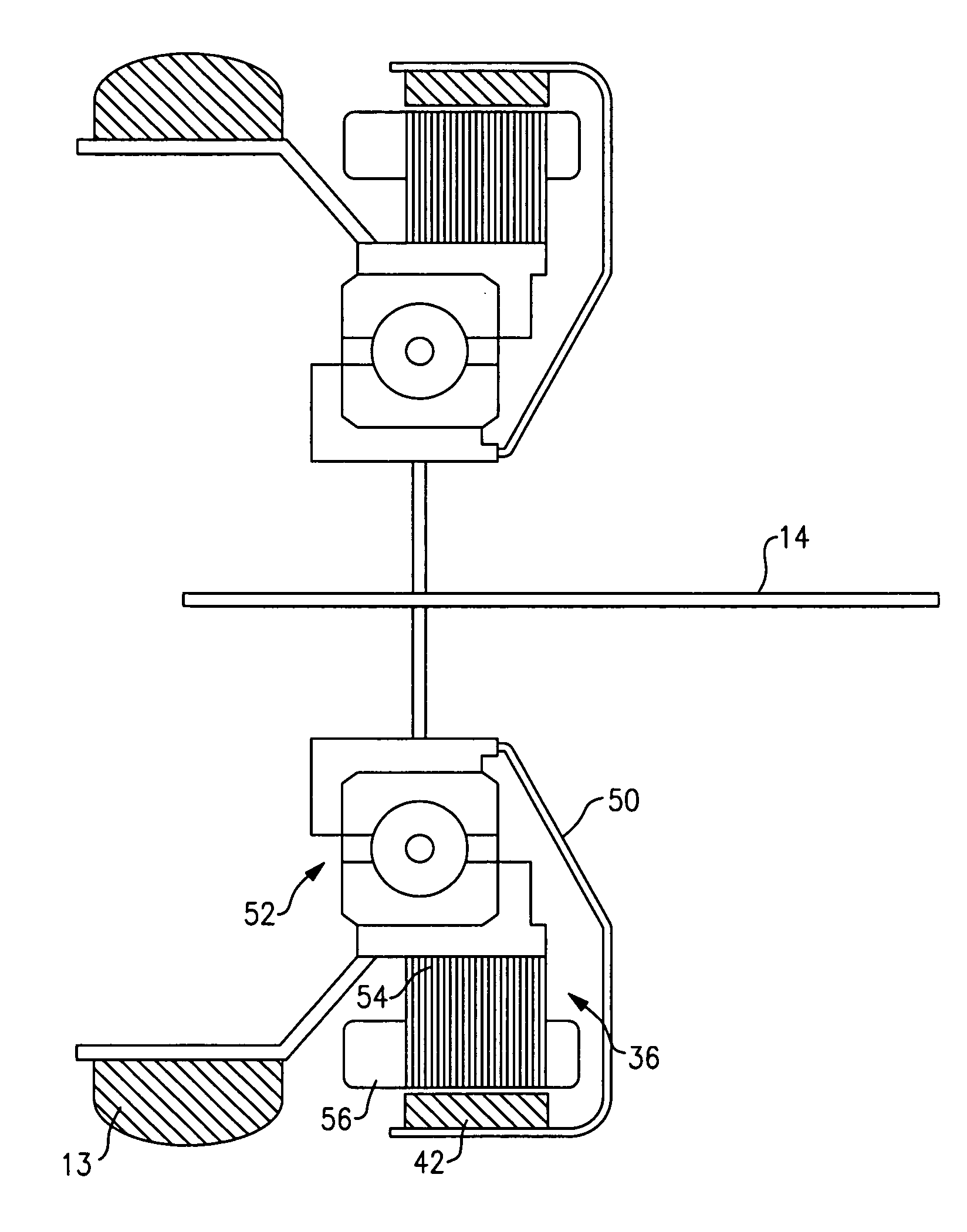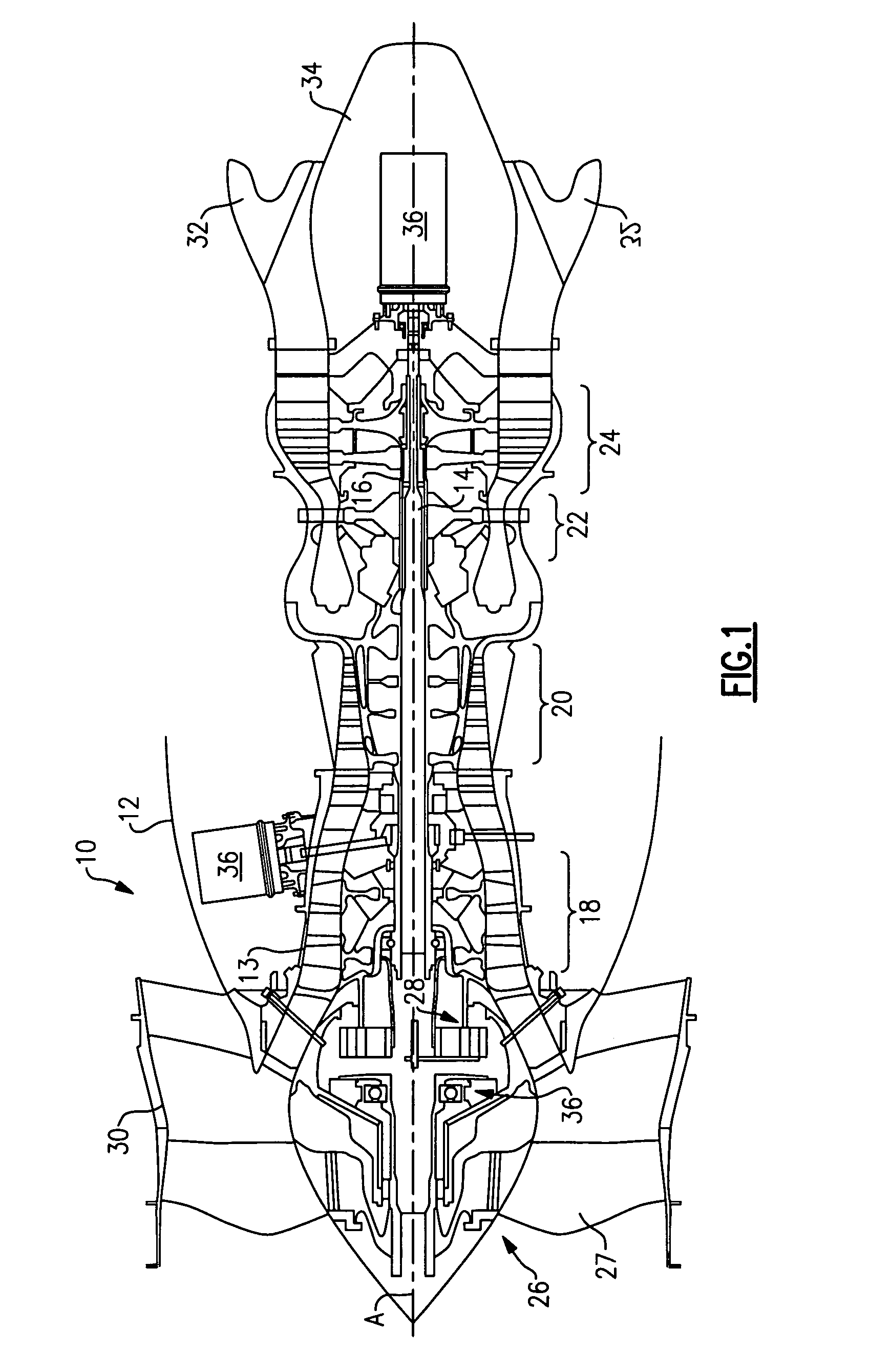Turbofan emergency generator
a generator and engine technology, applied in the direction of machines/engines, mechanical equipment, magnetic circuit shapes/forms/construction, etc., can solve the problems of inability to retract in flight, significant challenges in aircraft design, containment issues, etc., and achieve the effect of increasing the speed of the generator
- Summary
- Abstract
- Description
- Claims
- Application Information
AI Technical Summary
Benefits of technology
Problems solved by technology
Method used
Image
Examples
Embodiment Construction
[0013]An example turbine engine 10 is shown in FIG. 1. The turbine engine 10 includes a core 12 having a housing 13. The example turbine engine 10 includes a two spool arrangement provided by first and second shafts 14, 16 that rotates about a common axis A. The first shaft 14 corresponds to a low pressure spool, and the second shaft 16 corresponds to a high pressure spool. The shafts 14, 16 rotate about an axis A. The first shaft 14 is coupled to a low pressure compressor section 18 and a low pressure turbine section 24. The second shaft 16 is coupled to a high pressure compressor section 20 and a high pressure turbine section 22. The shafts 14, 16 are supported within the housing 13 for rotation and typically include multiple portions secured to one another, as is known in the art.
[0014]A turbofan 26 having multiple blades 27 is typically coupled to the first shaft 14 by an epicyclic gear train 28, which reduces the speed of the turbofan 26. The turbofan 26 is arranged within a na...
PUM
 Login to View More
Login to View More Abstract
Description
Claims
Application Information
 Login to View More
Login to View More - R&D
- Intellectual Property
- Life Sciences
- Materials
- Tech Scout
- Unparalleled Data Quality
- Higher Quality Content
- 60% Fewer Hallucinations
Browse by: Latest US Patents, China's latest patents, Technical Efficacy Thesaurus, Application Domain, Technology Topic, Popular Technical Reports.
© 2025 PatSnap. All rights reserved.Legal|Privacy policy|Modern Slavery Act Transparency Statement|Sitemap|About US| Contact US: help@patsnap.com



